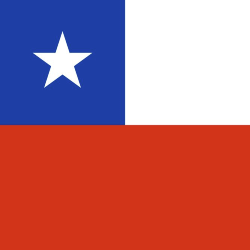Murdering Eagles To Save The Climate? Wyoming’s Wind Energy Boom – OpEd
By Joshua Frank
Like many roads that cut through Wyoming, the highway into the town of Rawlins is a long, winding one surrounded by rolling hills, barbed wire fences and cattle ranches. I’d traveled this stretch of Wyoming many times. Once during a dangerous blizzard, another time during a car-rattling thunderstorm, the rain so heavy my windshield wipers couldn’t keep pace with the deluge. The weather might be wild and unpredictable in Wyoming’s outback, but the people are friendly and welcoming as long as you don’t talk politics or mention that you live in a place like California.
One late summer afternoon on a trip at the height of the Covid pandemic, I stopped off in Rawlins for lunch. There wasn’t a mask in sight, never mind any attempt at social distancing. Two men sat in a booth right behind me, one in a dark suit and the other in overalls, who struck me as a bit of an odd couple. Across from them were an older gentleman and his wife, clearly Rawlins locals. They wondered what those two were up to.
“Are you guys here to work on that massive wind farm?” asked the husband, who clearly had spent decades in the sun. He directed his question to the clean-cut guy in the suit with a straight mustache. His truck, shiny and spotless, was visible out the window, a hardhat and clipboard sitting on the dashboard.
“Yes, we’ll be in and out of town for a few years if things go right. There’s a lot of work to be done before it’s in working order. We’re mapping it all out,” the man replied.
“Well, at least we’ll have some clean energy around here,” the old man said, chuckling. “Finally, putting all of this damned wind to work for once!”
I ate my sandwich silently, already uncomfortable in a restaurant for the first time in months.
“There will sure be a lot of wind energy,” the worker in overalls replied. “But none of it’s for Wyoming.” He added that it would all be directed to California.
“What?!” exclaimed the man as his wife shook her head in frustration. “Commiefornia?! That’s nuts!”
Right-wing hyperbole aside, he had a point: it was pretty crazy. Projected to be the largest wind farm in the country, it would indeed make a bundle of electricity, just not for transmission to any homes in Rawlins. The power produced by that future 600-turbine, 3,000 MW Chokecherry and Sierra Madre wind farm, with its $5-billion price tag, won’t, in fact, flow anywhere in Colorado, even though it’s owned by the Denver-based Anschutz Corporation. Instead, its electricity will travel 1,000 miles southwest to exclusively supply residents in Southern California.
The project, 17 years in the making and spanning 1,500 acres, hasn’t sparked a whole lot of opposition despite its mammoth size. This might be because the turbines aren’t located near homes, but on privately owned cattle ranches and federal lands managed by the Bureau of Land Management. Aside from a few raised eyebrows and that one shocked couple, not many people in Rawlins seemed all that bothered. Then again, Rawlins doesn’t have too many folks to bother (population 8,203).
Wyoming was once this country’s coal-mining capital. Now, with the development of wind farms, it’s becoming a major player in clean energy, part of a significant energy transition aimed at reducing our reliance on fossil fuels.
Even so, Phil Anschutz, whose company is behind the Chokecherry and Sierra Madre wind farms, didn’t get into the green energy game just to save the climate. “We’re doing it to make money,” admitsAnschutz, who got the bulk of his billion-dollar fortune from the oil industry. With California’s mandate to end its reliance on fossil fuels by 2045, he now sees a profitable opportunity, and he’s pulling Wyoming along for the ride.
Since 1988, Wyoming........
© Eurasia Review






















 Toi Staff
Toi Staff Belen Fernandez
Belen Fernandez Gideon Levy
Gideon Levy Andrew Mitrovica
Andrew Mitrovica Tarik Cyril Amar
Tarik Cyril Amar Rachel Marsden
Rachel Marsden Warren J. Blumenfeld
Warren J. Blumenfeld Dr Ramzy Baroud
Dr Ramzy Baroud Patrick Gathara
Patrick Gathara Brad Glosserman
Brad Glosserman Imad K Harb
Imad K Harb
